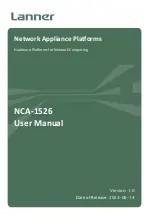
Default level
2: System level
Parameters
no-summary
: This argument is only applicable to the ABR of a stub area. With it configured, the
ABR advertises only a default route in a Summary-LSA to the stub area (such an area is called a
totally stub area).
Description
Use
stub
to configure an area as a stub area.
Use
undo stub
to remove the configuration.
By default, an area is not configured as a stub area.
When an area is configured as a stub area, all the routers attached to the area must be configured
with the
stub
command.
Related commands:
default-cost
.
Examples
# Configure OSPFv3 area 1 as a stub area.
<Sysname> system-view
[Sysname] ospfv3 1
[Sysname-ospfv3-1] area 1
[Sysname-ospfv3-1-area-0.0.0.1] stub
vlink-peer (OSPFv3 area view)
Syntax
vlink-peer
router-id
[
hello
seconds
|
retransmit
seconds
|
trans-delay
seconds
|
dead
seconds
|
instance
instance-id
|
ipsec-policy policy-name
] *
undo vlink-peer
router-id
[
hello
|
retransmit
|
trans-delay
|
dead
|
ipsec-policy
] *
View
OSPFv3 area view
Default level
2: System level
Parameters
router-id
: Router ID for a virtual link neighbor.
hello seconds
: Specifies the interval in seconds for sending Hello packets, ranging from 1 to 8192,
with the default as 10. This value must be equal to the
hello
seconds
configured on the virtual link
peer.
retransmit seconds
: Specifies the interval in seconds for retransmitting LSA packets, ranging from 1
to 3600, with the default as 5.
trans-delay seconds
: Specifies the delay interval in seconds for sending LSA packets, ranging from
1 to 3600, with the default as 1.
dead seconds
: Specifies the neighbor dead time in seconds, ranging from 1 to 32768, with the
default as 40. This value must be equal to the
dead
seconds
configured on the virtual link peer, and
at least four times the value of
hello
seconds
.
instance Instance-id
: Instance ID of an virtual link, in the range of 0 to 255, with the default as 0.
ipsec
-
policy policy-name:
Applies an IPsec policy, a string of 1 to 15 characters.
328
















































